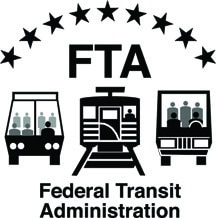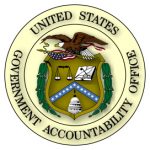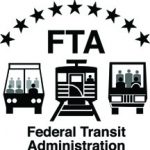
The required minimum rate for random alcohol testing is unaffected by this change and will remain at 10 percent for 2019.
Click here to read FTA’s letter about this increase.
Tag: Federal Transit Administration
WASHINGTON – The U.S. Department of Transportation’s Federal Transit Administration (FTA) announced Oct. 23 that California and Oklahoma have obtained federal certification of their rail transit State Safety Oversight (SSO) programs.
Federal law requires states with rail transit systems to obtain FTA certification of their SSO programs by April 15, 2019. By federal law, the deadline cannot be waived or extended.
Twenty-seven of 30 states have received approval of their plans.
“FTA is pleased that California and Oklahoma have developed safety oversight programs that meet federal certification requirements and will strengthen rail transit safety,” said FTA Acting Administrator K. Jane Williams. “With certification, transit agencies in California and Oklahoma can continue to receive federal funding.”
The California Public Utilities Commission is responsible for providing safety oversight of the following rail transit agencies:
San Francisco Bay Area Rapid Transit District heavy rail, light rail and automated guideway systems;
San Francisco Municipal Transportation Agency light rail, cable car and streetcar systems;
Sacramento Regional Transit District light rail system;
Santa Clara Valley Transportation Authority light rail system
San Diego Metropolitan Transportation System light rail system;
Los Angeles County Metropolitan Transportation Authority light rail and heavy rail systems; and
North County Transit District light rail (trolley) system.
The Oklahoma Department of Transportation is responsible for providing safety oversight of the Oklahoma City streetcar system.
For the full release from FTA, follow this link.

According to the GAO, the FTA has not:
- issued regulations regarding the evaluation and rating process for Core Capacity Improvement projects, which are a category of eligible projects within the program;
- established a program of interrelated projects designed to allow for the simultaneous development of more than one transit project within the Capital Investment Grants program; or
- implemented a pilot program designed to create a fast-track approval process for transit projects that meet specific statutory criteria.
During the review, FTA told GAO that they do not have any immediate plans to address any of the three statutory provisions. The FTA cited an earlier budget proposal by President Trump to eliminate the Capital Investment Grant program, however, Congress provided the program with $2.6 billion in funding since that proposal and required FTA to continue to administer the program in doing so.
The GAO left the FTA with three recommendations for Executive Action:
- The FTA administrator should initiate a rulemaking regarding the evaluation and rating process for Core Capacity Improvement projects, consistent with statutory provisions.
- The FTA administrator should take steps, such as undertaking additional research or public outreach, to enable FTA to evaluate and rate projects in a program of interrelated projects, in a manner consistent with statutory provisions; and
- The FTA administrator should take steps to describe the process project sponsors should follow to apply for consideration as a pilot project under the Expedited Project Delivery for Capital Investment Grants Pilot Program.
FTA stated to the GAO that it is reviewing the law and determining their next steps but did not indicate any specific plans or timeframes for addressing the three outstanding provisions. In their report, the GAO warned the FTA that “by not addressing those provisions, FTA runs the risk of failing to implement provisions of federal law.”
Click here to read the GAO’s full report.
The GAO is an independent, nonpartisan agency that works for Congress. Often called the “congressional watchdog,” GAO investigates how the federal government spends taxpayer dollars.
States must receive FTA certification by April 15, 2019, or new federal transit funds cannot be awarded

Federal law requires states with rail transit systems to obtain FTA certification of their SSO Programs by April 15, 2019. By federal law, the deadline cannot be waived or extended.
“FTA is pleased that North Carolina, Puerto Rico and Washington have developed safety oversight programs that meet federal certification requirements and will strengthen rail transit safety,” said FTA Acting Administrator K. Jane Williams. “With this certification, transit agencies in the three jurisdictions can continue to receive federal funding.”
The North Carolina Department of Transportation is responsible for providing safety oversight of the Charlotte Area Transit System light rail and streetcar systems.
The Puerto Rico Emergency and Disaster Management Bureau is responsible for providing safety oversight of the Tren Urbano heavy rail system.
The Washington State Department of Transportation is responsible for providing safety oversight of the Sound Transit light rail systems and City of Seattle street car and monorail systems.
By April 15, 2019, 30 states must obtain certification of 31 SSO programs. With today’s announcement, 17 states have now achieved SSO program certification.
If a state fails to meet the deadline, FTA is prohibited by law from awarding any new federal transit funds to transit agencies within the state until certification is achieved. A certification status table by state is available online.
To achieve FTA certification, an SSO Program must meet several federal statutory requirements, including establishing an SSO agency that is financially and legally independent from the rail transit agencies it oversees. In addition, a state must ensure that its SSO agency adopts and enforces relevant federal and state safety laws, has investigatory authority and has appropriate financial and human resources for the number, size and complexity of the rail transit systems within the state’s jurisdiction. Furthermore, SSO agency personnel responsible for performing safety oversight activities must be appropriately trained.

“I also want to take this opportunity to announce that the Department (DOT) will be seeking public input from across the transportation industry to identify existing barriers to innovation. This includes not only barriers that impact vehicles, but also impediments to innovations that can impact our highways, railroads, trains and motor carriers,” Chao said.
In response to Chao’s announcement, SMART Transportation Division National Legislative Director John Risch wrote in an email, “This rush to autonomous vehicles of all kinds should worry all transportation workers.
“We have been working with Congress to limit legislation on self-driving vehicles to automobiles and to not include buses and trucks. So far our efforts on that front have been successful,” Risch said. “We will continue to work on this issue, but the times they are a-changing.”
As part of Chao’s efforts to deregulate the transportation industry, notices for public comment have appeared in the Federal Register on behalf of DOT’s Federal Highway Administration (FHWA), Federal Transit Administration (FTA) and National Highway Traffic Safety Administration (NHTSA).
FHWA
- Click here to read the Request for Information on Integration of ADS into the Highway Transportation System as published by the Federal Register – to be published 01/18
FTA
- Click here to read the Request for Comments on Automated Transit Buses Research Program as published in the Federal Register
- Click here to read the Request for Comment on Removing Barriers to Transit Bus Automation
NHTSA
- Click here to read the Request for Comment on Removing Regulatory Barriers for Automated Vehicles from the Federal Register

“With today’s action, FTA continues its steady progress in establishing the regulatory framework needed to implement and strengthen our new and existing safety transit oversight and enforcement authorities,” said FTA Acting Administrator Carolyn Flowers.
This rule also establishes procedural rules for the FTA to conduct inspections, investigations, audits and examinations of Chapter 53 grant recipients’ public transportation systems, withhold or direct the use of Federal transit funds, and issue directives.
FTA’s Office of Transit Safety and Oversight (TSO) will host webinars on Tuesday, August 30 from 2:00 – 3:00pm ET and Thursday, September 1 from 3:00 – 4:00pm ET to discuss the Public Transportation Safety Program Rule. Participants only need to register for one session. The webinar will provide participants with the opportunity to learn about the rule’s provisions and ask questions related to its implementation.
Links:
Public Transportation Safety Program Final Rule
Register for the webinar on Tuesday, August 30 from 2:00 – 3:00pm ET
Register for the webinar on Thursday, September 1 from 3:00 – 4:00pm ET


In Establishing a Fatigue Management Program for the Bus and Rail Industry, the report identifies the major organizational and behavioral challenges that may be faced in addressing transit employee fatigue and recommends components of a successful fatigue management program.
In Preventing and Mitigating Transit Worker Assaults in the Bus and Transit Industry, the report discusses the risks and impediments to a safe workplace and recommends a process and measures to reduce the hazards that enable these assaults.
FTA will review the recommendations from both reports as it considers possible future action on these safety issues.

“We have made great progress in advancing accessible public transportation, but we still have work to do,” said U.S. Transportation Secretary Foxx. “We must ensure that Americans of all ages and abilities can access our nation’s transportation system. Today’s guidance reinforces our commitment to full implementation of the Americans with Disabilities Act.”
Public transit ridership increased 25 percent over the last 20 years, including a rise in the number of passengers with disabilities, according to DOT’s Beyond Traffic report. Transit agencies have made major capital investments to make nearly all of America’s busiest public transit stations accessible. Today, nearly all transit buses, light rail and heavy rail vehicles are ADA accessible, as well as two-thirds of rail transit stations.
“One of the important jobs we do at FTA is to ensure mobility for everyone, and this ADA Circular will help do just that,” said FTA Acting Administrator Therese McMillan. “For people of all abilities and ages, public transportation provides a lifeline to jobs, education and medical care. We need to maintain these ladders of opportunity for all.”
With the 25th anniversary of the landmark legislation as a backdrop, the release of FTA’s ADA Circular represents a major milestone in assistance to the transit community. It thoroughly explains ADA requirements for public transit, providing real-life situations as examples of good practices for the transit industry to ensure accessible services for riders. The document does not amend or supersede the DOT ADA regulations; rather, it offers explanatory scenarios and sample templates, such as a rail station checklist for new construction and alterations.
FTA developed the ADA Circular in three phases because of the breadth of the regulations. Each chapter was submitted to the public for notice and comment in the Federal Register and went through a 60-day comment period.

“The public transit industry offers good-paying careers that can lift Americans into the middle class or help them stay there, and more of these careers will be available in the future,” said Secretary Foxx. “These grants will help us overcome skills gaps and provide more young people with the training, apprenticeships, and educational opportunities they need to gain entry into these careers.”
Yesterday, the U.S. Departments of Transportation, Education, and Labor today released a joint report entitled “Strengthening Skills Training and Career Pathways across the Transportation Industry.” The report details the future growth areas or employment “hot spots” in transportation by industry subsectors, occupations, career areas, and geographic areas.
Secretary Foxx was joined by FTA Acting Administrator Therese McMillan, executives from LATTC, Community Career Development, Inc. (CCD), the Los Angeles County Metropolitan Transportation Authority (Metro), and state and local officials. Students from LATTC’s Transportation Technologies program were also on hand to speak about their experiences and demonstrate the skills they have learned at LATTC.
“The demand for skilled transit workers will continue to grow as new projects are planned, built, and come on line and as ridership continues to expand in cities like Los Angeles and other communities across the country,” said FTA Acting Administrator McMillan. “And we are committed to making careers in transit a real ladder to opportunity by helping provide education and financial security, especially for those in disadvantaged communities.”
Two organizations in Los Angeles were selected in this latest round of FTA workforce development grants: LATTC will receive funding to establish the Institute for Advanced Transportation Technology Training – the first program of its kind in a community college in the country; and CCD will receive funding for its Moving Employees into Transit Related Opportunities (METRO) program, which will partner with organizations like LA Valley College to recruit and train low-income individuals, women, veterans, minorities, and others from communities throughout Metropolitan Los Angeles.
FTA’s workforce development projects will develop or expand strategic partnerships with transit agencies, labor unions, nonprofits, and academic institutions, and some will also support small businesses in the transit sector owned by women and minorities. In addition, several projects will serve as scalable models that can be applied to future projects throughout the United States.
Among the projects selected nationwide:
- The Greater Cleveland Regional Transit Authority (GCRTA) will receive funding for the Career Pathways Program, which will address all aspects of the transit workforce by leveraging partnerships with Cuyahoga Community College, Cleveland State University, and El Barrio Workforce Development Center.
- Intercity Transit in Olympia, WA, will receive funding for its innovative Village Vans program, which aims to serve as a national model for rural transit agencies with large service areas. Like many rural agencies, Intercity Transit relies on volunteer drivers to meet its operational needs, and Village Vans provides volunteers free workforce training that prepares them for potential employment with Intercity Transit or other positions related to vehicle operations.
- The Grand Gateway Economic Development Association in Northeast Oklahoma will receive funding to establish the N2N Automotive University. This program will identify and train participants, including those from impoverished Native American communities, in automotive repair skills that can be applied to transit vehicles as well as a range of automotive careers. This project will use an innovative Nation-to-Nation (N2N) recruitment strategy.
Eligible applicants included public transportation providers at the state, local, and regional level, Metropolitan Planning Organizations, Native American tribes, non-profit institutions, and institutions of higher education. A list of selected projects is available online.
Demand for FTA’s workforce grants far exceeded available funds, as FTA received a total of 50 applications requesting over $27 million. The Obama Administration’s GROW AMERICA Act would provide $478 billion over the next six years to help build the transportation workforce of the future, providing consistent long-term funding for transportation and infrastructure.
These grants come at a crucial time in the transportation industry. According to the Strengthening Skills Training report, employers will need to hire and train a total of 4.6 million new workers – 1.2 times the current transportation workforce – due to expected growth, retirements, and turnover in the transportation industry from 2012 to 2022.
It is projected that 417,000 of these positions will be created as a direct result to increased demand on our transportation systems, and the highest percentage of these jobs will be in transit and ground passenger transportation.